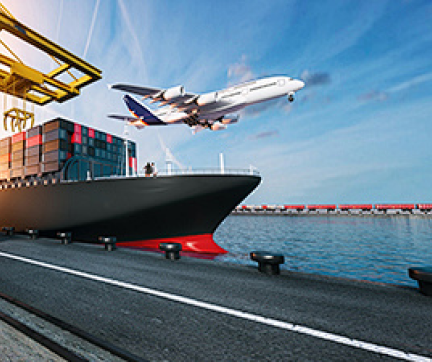
Sea transportation and air transportation are two common modes of international cargo transportation, each with its unique advantages and disadvantages, as follows:
Maritime transport
Advantage
Large transportation volume: The cargo capacity of maritime vessels is usually very large. A large container ship can carry thousands or even tens of thousands of standard containers of goods, making it suitable for the transportation of large quantities of goods.
Low transportation cost: Due to the large volume of transportation, the transportation cost per unit of goods is relatively low. Especially for long-distance transportation, the cost advantage of sea transportation is more obvious.
Strong adaptability: Sea transportation can transport various types of goods, including large equipment, vehicles, construction materials, etc., and is almost not restricted by the shape and weight of the goods.
Disadvantage
Slow transportation speed: The speed of sea transportation is relatively slow, and the voyage time is long. The sea route from China to Europe may take several weeks or even months, which is not very suitable for goods with high timeliness requirements.
Greatly influenced by weather and seasons: The weather at sea is complex and changeable. Severe weather conditions such as typhoons, heavy rain, and heavy fog can affect the safety and speed of ships' navigation, and may even cause delays or detour of ships.
Air transport
Advantage
Fast transportation speed: This is the greatest advantage of air transportation. Aircraft fly at high speeds and can deliver goods to their destinations in a short time. Usually, it only takes a few hours to a day to travel from China to major trading regions such as Europe and America. It is suitable for goods with high timeliness requirements, such as electronic products, fresh food, and urgent documents.
High safety: The transportation process of air freight is relatively stable. The transportation of goods between airports is strictly supervised and protected, and the risk of damage, loss or theft of goods is relatively low.
High accuracy: Airlines usually can provide relatively accurate flight schedules, and the arrival time of goods is relatively fixed, which is convenient for cargo owners to arrange subsequent production, sales and other links.
Disadvantage
High transportation costs: The freight for air transportation is usually much higher than that for sea transportation. This is mainly due to the high operating costs of aircraft, including fuel consumption, crew salaries, airport takeoff and landing fees, etc.
Limited transportation capacity: The cargo capacity of aircraft is relatively small. Generally, the cargo capacity of large cargo aircraft is around several dozen tons, which cannot be compared with that of sea vessels. For the transportation of large quantities of goods, air transportation often fails to meet the demand.
There are many restrictions on goods: Air transportation has strict restrictions on the weight, size, and nature of goods. Some flammable, explosive, radioactive and other dangerous items, as well as oversized and overweight goods, usually cannot be transported by air.

